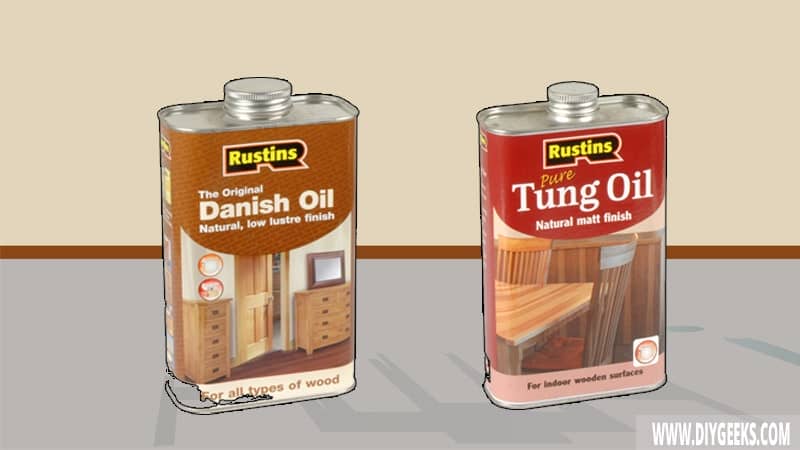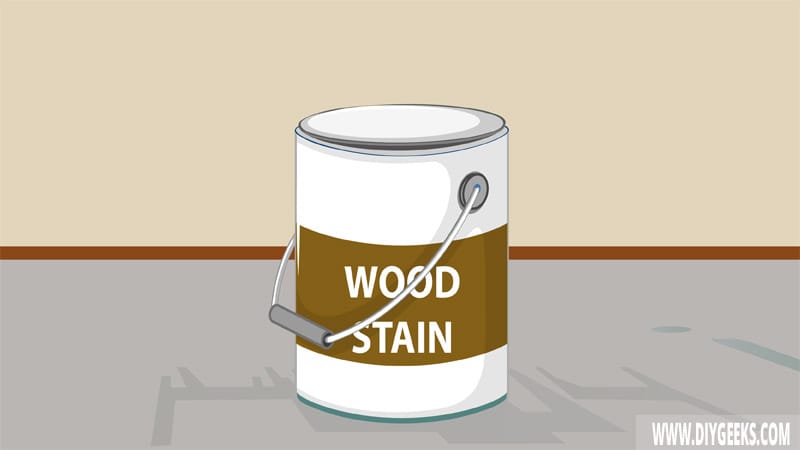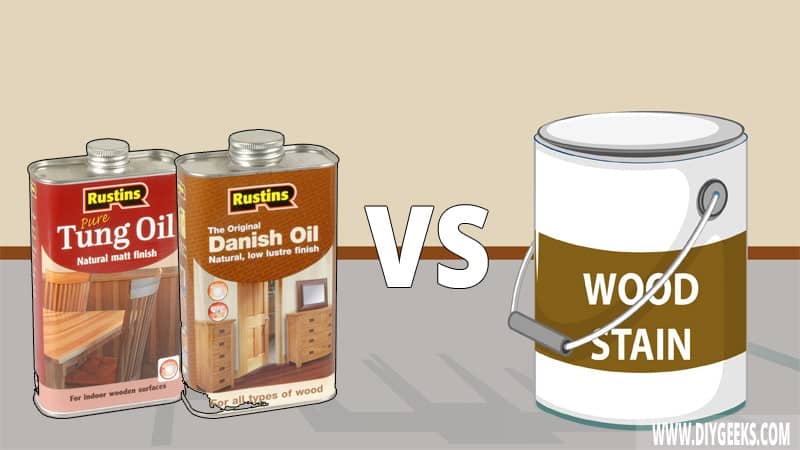Wood oil is a synthetic or natural oil that enhances and protects the wood. Wood stain is a penetrating finish that enhances the wood but doesn’t protect it.
Wood oil has better durability, water resistance, wood protection, and is easier to clean and maintain than wood stain. Wood stain has a faster dry time and highlights surface patterns and texture better than wood oils.
What is Wood Oil?

Wood oils are natural or synthetic oils that enhance the wood’s appearance and protect it. It creates a protective layer over the surface and protects it from low water and moisture amounts.
There are several wood oil finish types, including Tung oil, Linseed Oil, and Danish oil. Each type has unique features and formulas. For instance, Tung oil is obtained from the nuts of the Tung tree, Linseed oil is obtained from the Flax plank, and Danish oil is a combination of both.
You can use wood oil for the following things.
- To protect the wood from damage.
- To get a high-gloss and reflective finish.
- Over an existing finish to preserve it.
- To highlight and reveal the natural beauty of wood.
- To make a surface water-resistant.
What is Wood Stain?

Wood stain is a finish that enhances the wood’s appearance by creating an amber-like semi-transparent finish over it. It penetrates the wood pores and creates a solid film over it.
The wood stain finish doesn’t protect a surface as it’s not formulated with protective additives. Its finish is water-soluble and will be removed if exposed to constant water.
You can use wood stain for the following things.
- To change the color of the wood.
- To revive the appearance of old surfaces.
- As an undercoat before applying a wood sealer.
- On indoor or decorative wooden surfaces.
- To tint clear finishes.
Wood Oil vs Wood Stain
The differences between wood oil and wood stain are listed below.
Dry Time
Wood stain dries faster than wood oil as they have a thinner viscosity, a simpler formula, and doesn’t contain too many additives.
Water-based wood stain takes less than 1 hour to dry between coats, while Linseed oil takes around 24 hours to dry enough for a re-coat.
Durability
Wood oil finish is more durable and lasts longer than a wood stain finish as they are formulated with more protective additives, and its long dry time gives the particles more time to harden and compact.
Water Resistance
Wood oil finish has better water resistance than wood stain finish as it’s formulated with more protective additives, and its particles are tightly packet so water can’t penetrate it.
Wood stain doesn’t have a water-resistant finish as it has a simple formula that doesn’t contain protective additives.
Wood Protection
Wood oil finish offers better wood protection than wood stain as it forms a glossy finish that repels water and moisture.
Wood stain doesn’t protect a wooden surface as its finish is water-soluble and isn’t formulated with protective additives.
Interior or Exterior Surfaces
Wood oils are suited for interior and exterior surfaces due to their durability and moisture resistance. Wood stain finish is suited for interior low-traffic surfaces that aren’t exposed to constant water.
You must seal both finishes with a sealer if you apply them outdoors.
Cleaning and Maintenance
Wood oil finish is easier to clean and maintain than wood stain as its glossy moisture-resistant finish repels stains and moisture better.
Wood stain doesn’t repel stains or moisture, so they can easily stick over its finish. This increases the amount of time you must clean the finish.
The Finish
Wood oils create a glossy moisture-resistant finish that enhances the wood appearance and offers medium protection. It creates a semi-transparent finish that depends on the surface color shade.
Wood stain creates an amber-like finish that enhances the wood’s appearance by highlighting the surface texture and patterns.


